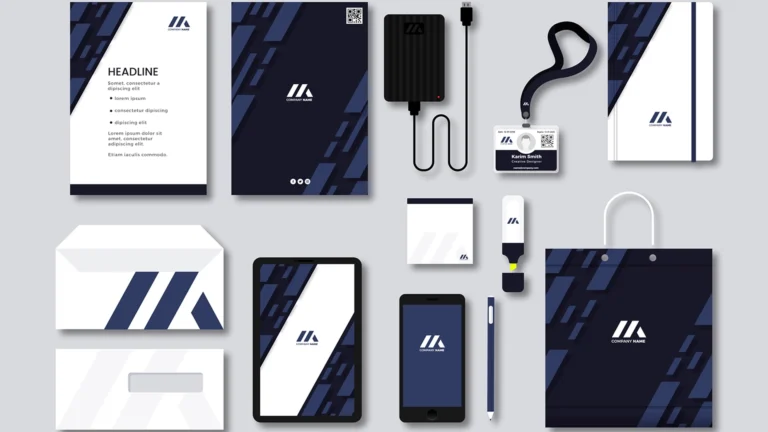In today’s fast-paced digital landscape, having a modern, well-optimized website is no longer optional—it’s a necessity. Whether you’re a small business or a large enterprise, your website serves as your digital storefront and plays a crucial role in shaping how customers perceive your brand. A well-designed website does more than just look good; it enhances user experience, boosts conversion rates, strengthens your online presence, and helps businesses stay ahead in a competitive market.
This blog explores why a modern website is essential in 2025, how to optimize for a better user experience, the impact of web design on conversion rates, how to decide between a custom-built or template-based website, and a website redesign checklist to ensure your site is performing at its best.
Why a Modern Website is Critical for Business Success in 2025
A modern website isn’t just about aesthetics; it plays a key role in how users interact with your business online. According to studies, 75% of consumers judge a company’s credibility based on its website design alone. If your site looks outdated, is slow to load, or is difficult to navigate, potential customers may quickly leave and turn to competitors.
1. Mobile-First Design is a Must
With over 60% of web traffic now coming from mobile devices, having a fully responsive website is no longer optional. A mobile-friendly design ensures that users have a seamless experience whether they are visiting your site from a smartphone, tablet, or desktop. Google’s mobile-first indexing also prioritizes websites that are optimized for mobile users, meaning a non-responsive site can negatively impact your search rankings.
2. Faster Load Times Improve Search Rankings and Conversions
A slow-loading website not only frustrates visitors but also impacts your bottom line. Research shows that a one-second delay in page load time can reduce conversions by 7%, and sites that take longer than three seconds to load experience significantly higher bounce rates. Google also considers page speed as a ranking factor, meaning slow sites may struggle to appear in search results. Optimizing images, reducing unnecessary code, and leveraging browser caching are just a few strategies that can significantly improve site speed.
3. SEO and Accessibility Matter More Than Ever
A modern website should be built with search engine optimization (SEO) in mind. From well-structured code to keyword-rich content and properly tagged images, SEO-friendly websites are more likely to rank higher in search engine results. Additionally, accessibility is becoming a key factor in web design. Ensuring that your website is usable for all individuals, including those with disabilities, improves user experience and can help your business avoid potential legal issues related to web accessibility compliance.
How to Optimize Your Website for a Better User Experience
A well-designed website goes beyond visual appeal; it must be intuitive, fast, and easy to navigate. A positive user experience (UX) keeps visitors engaged and encourages them to take action, whether that means making a purchase, signing up for a service, or contacting your business.
1. Keep Navigation Simple and Intuitive
Website navigation should be clear and easy to follow. Users should be able to find the information they need without excessive clicking or searching. A well-structured menu with clearly labeled categories, a search bar, and intuitive site architecture ensures that visitors can quickly locate the content they’re looking for. Implementing a sticky navigation bar can also make browsing more convenient, especially for mobile users.
2. Improve Readability and Visual Hierarchy
Text-heavy pages with poor formatting can overwhelm visitors and lead to high bounce rates. Proper use of headings, bullet points, and white space helps break up content, making it easier to read and digest. Choosing legible fonts, maintaining strong contrast between text and background colors, and structuring content in a logical manner all contribute to better readability.
3. Optimize for Speed and Performance
Page speed is a critical component of user experience. Compressing images, reducing unnecessary plugins, and enabling lazy loading for media files can all help enhance loading times. Additionally, minimizing CSS and JavaScript files, optimizing server response times, and using a content delivery network (CDN) can further improve overall performance.
The Impact of Web Design on Conversion Rates
Your website is not just an online presence—it’s a tool designed to convert visitors into customers. A well-structured, visually appealing, and strategically optimized site can directly influence conversion rates and impact business success.
1. First Impressions Matter
Visitors form an opinion about your website within milliseconds of landing on it. If the design appears outdated, cluttered, or unprofessional, they are more likely to leave. A visually appealing, modern, and well-structured site encourages users to stay longer, explore, and engage with your content.
2. Call-to-Action (CTA) Placement is Crucial
Strategically placed calls-to-action can guide users toward desired actions, such as signing up for a newsletter, requesting a quote, or making a purchase. CTAs should be clearly visible, use compelling language, and stand out from the rest of the content. Using contrasting colors, placing CTAs above the fold, and repeating them throughout the page can help increase conversions.
Custom vs. Template Websites: Which One is Right for You?
Choosing between a custom-built website and a template-based solution depends on your business needs, budget, and future scalability goals.
Custom Website (Best for Growth-Focused Businesses)
- Fully tailored to your brand and business requirements
- Allows for advanced functionalities such as custom dashboards, integrations, and automation
- Offers greater flexibility for future scaling and updates
- Enhanced SEO optimization and faster load times compared to many template-based solutions
Template Website (Best for Startups and Budget-Conscious Businesses)
- Faster and more cost-effective to set up
- Pre-designed layouts with easy customization options
- Limited flexibility for adding advanced features or unique branding elements
- May include unnecessary code that can slow down performance
Website Redesign Checklist: What You Need to Know Before Updating Your Site
If your website is outdated, not mobile-friendly, or failing to generate leads, it may be time for a redesign. Here’s a checklist to guide you through the process:
- Define Your Goals – Are you redesigning to improve user experience, SEO, branding, or all of the above?
- Analyze Current Performance – Use Google Analytics to identify weak areas and high-exit pages.
- Ensure Mobile-First Design – A responsive site is critical for SEO and user experience.
- Implement SEO Best Practices – Optimized metadata, structured data, and a keyword strategy should be built into the redesign.
- Test Across All Devices – Ensure your website works flawlessly on desktops, tablets, and mobile devices before launch.
Conclusion
A modern, well-designed website is an essential tool for business success in 2025. It enhances user experience, improves search rankings, and directly impacts conversion rates. Whether you are optimizing your existing site, debating between a custom or template solution, or planning a full redesign, ensuring your website meets today’s digital standards is crucial.
If your current website is outdated or underperforming, now is the time to take action. Investing in a professionally designed, fully optimized site can set your business up for long-term success.












